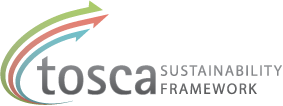Chemical pollution
Today there are more than 40 000 commercially available chemicals, some of which, e.g. many pesticides and biocides, and industrial chemicals such as flame retardants and plastic softeners, are known to have adverse impacts on human and ecosystem health. The potential chemical threat has gained growing attention in society recently as the occurrence of e.g. certain cancers, hormonal disorders, and neurological diseases such as ADHD in children, are increasingly suspected to be caused by chemical exposure. Chemical pollution is also known to have negative impacts on biodiversity, and especially so in combination with other forms of stress, such as climate change.
The sheer amount of different chemicals in combination with the many ways they are used makes it very difficult to keep track of how chemicals flow in society and where they end up in the environment. Traditionally, toxicological studies have focused on a single chemical compound at a time. Even with this focus only a small fraction of all chemicals are studied with regard to their toxicological effects. Comprehensive testing is costly to conduct and in some cases, such as hormone-disruptive effects on reproductive organs, complicated by time-lags of several decades between exposure and effects.
Recent studies (ref) show that combinations of chemicals have adverse effects while each individual chemical is well below its respective toxicological effect dose. This is known as the “cocktail effect” and our knowledge of how chemicals act in combination is practically zero.
In 2007, the European Community established a new law, REACH, which deals with the Registration, Evaluation, Authorisation and Restriction of Chemical substances. The intention is to improve the protection of human and environmental health, but also to enhance the innovative capability and competitiveness of the EU chemicals industry (http://ec.europa.eu/environment/chemicals/reach/reach_intro.htm).

